The Blueprint for Blueprint
Words by Kailani Wetherell, Q&A by: Tyler Fox, Luke Diehl, and Mike Ballin
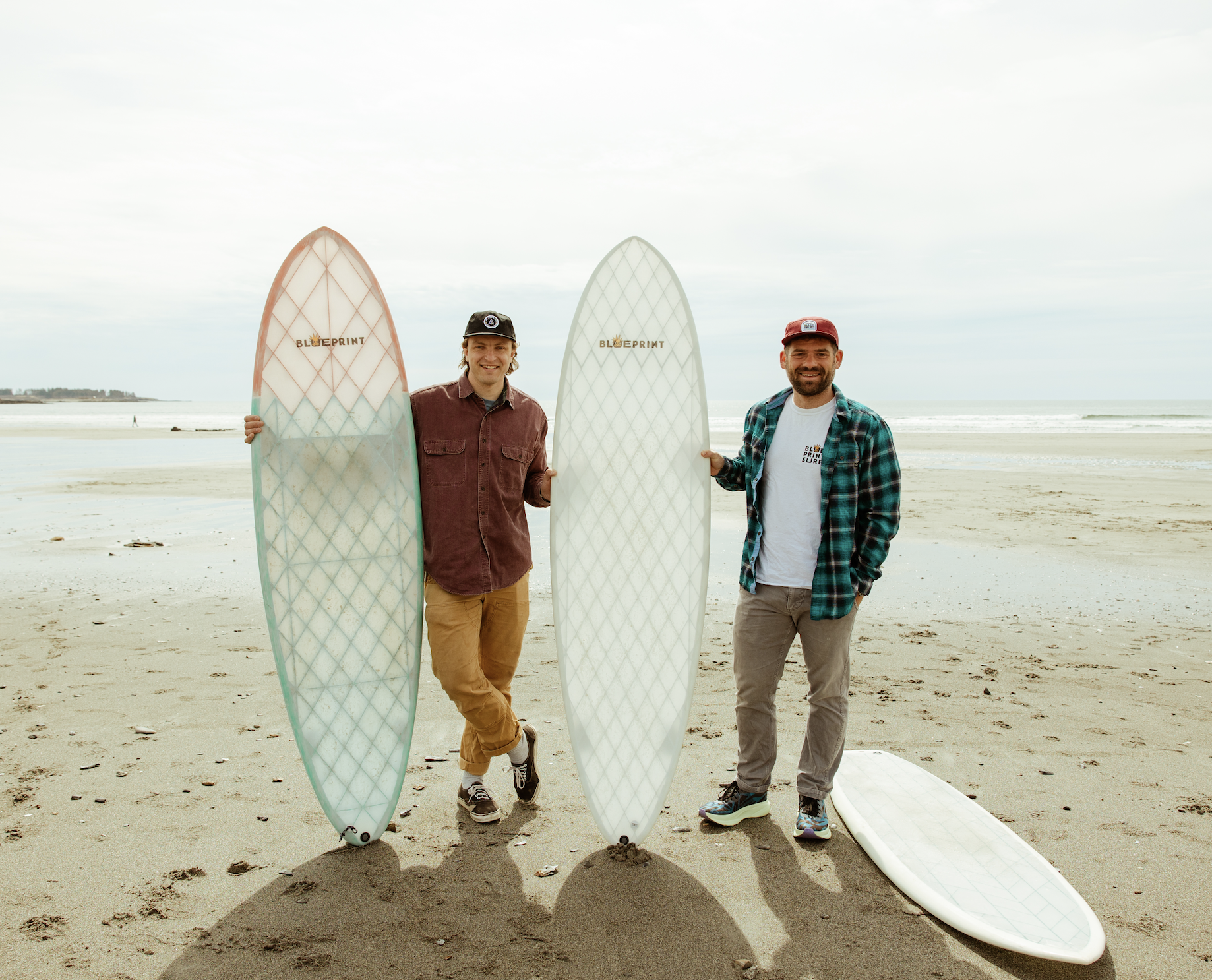
At Blueprint Surf, the journey began with a simple question: Could a surfboard be created from recycled materials? Founded by Mike Ballin and Luke Diehl, their story is rooted in a shared passion for both surfing and environmental sustainability. After hearing from surfers frustrated with traditional board materials, Luke’s curiosity led him to Mike, who was studying Environmental Science and already crafting boards of his own. Together, they charted a course to redefine how surfboards are made, blending innovation with a commitment to protecting the oceans.
What sets Blueprint apart is their dedication to creating eco-friendly boards without compromising performance. They 3D-print core structures from recycled fishing nets, minimizing waste while ensuring durability. Their goal is to build boards that not only ride well but also foster lasting connections between surfers and the ocean.
As part of the ECOBOARD Project, Blueprint Surf draws inspiration from a community of like-minded builders and visionaries. They believe that viable alternatives to conventional materials exist and are eager to share their journey with others. With every board crafted, they aim to spark conversations about sustainability in surfing, proving that fun and eco-consciousness can coexist.
Dive into more below:
BOARD COMPANY NAME: Blueprint Surf
SHAPER(S) NAMES: Mike Ballin
FOUNDER/BACKGROUND: Mike Ballin and Luke Diehl
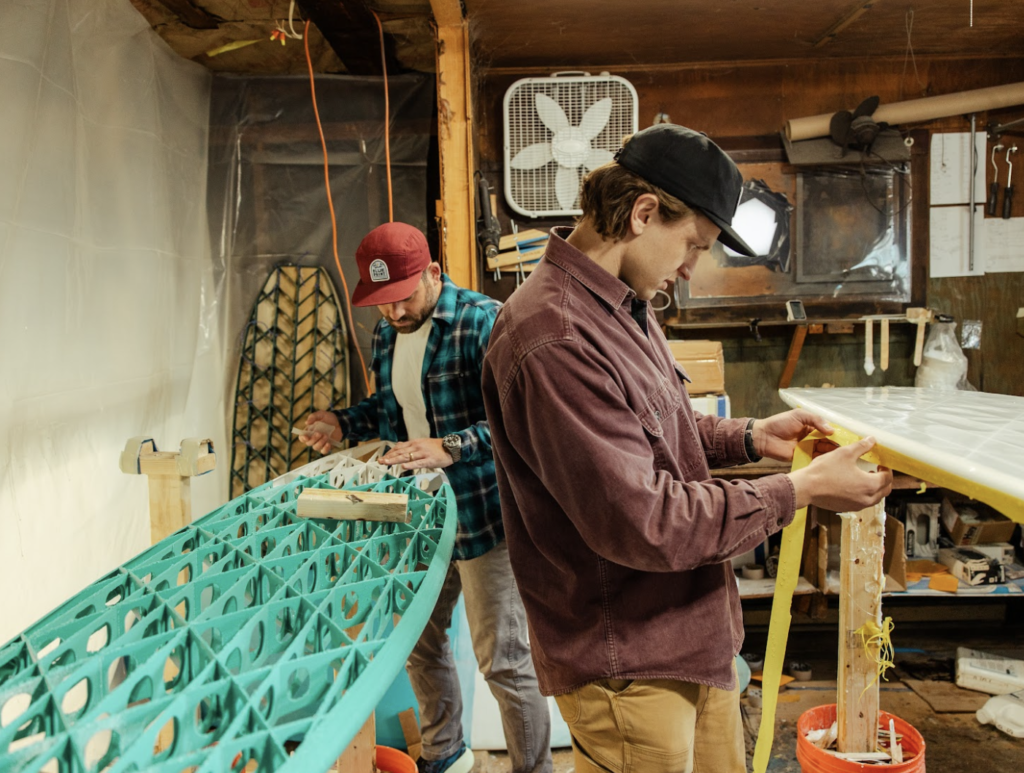
HOW DID YOU GUYS START/WHAT’S THE ORIGIN STORY?
I (Luke) was working at a company that did a lot of 3D printing, and several of our customers were surfers. They asked if we could 3D print a surfboard for them out of recycled fishing nets, but the engineers at my company said it was impossible. That was nagging at me for a few years until I ran into Mike’s dad at a local surf break, and heard Mike was studying Environmental Science in college. I knew Mike was a good surfer and had made a few boards, so we just started working together.
IS THIS A PASSION PROJECT?
We’re super passionate about it, but it’s not just a hobby. Blueprint is a full-time job for both of us.
WHY ECO-FRIENDLY BOARDS?
Honestly, personal health was a huge part of it. Some of the common surfboard materials are so nasty that we just aren’t willing to be around them every day. We want to make boards at Blueprint Surf for the next 40 years, so we aren’t gonna work with stuff that makes us sick. The same thing goes for the health of the environment. We want Blueprint Surf to be a successful business, but not if it means putting tons of waterlogged foam and micro-plastic debris into landfills.
HOW ARE YOU CREATING ECO-FRIENDLY BOARDS?
We 3D-print a core structure out of recycled fishing nets, and then coat it in fiberglass and bio-epoxy. 3D-printing an exact shape creates much less waste than carving away at a foam blank, and we also reuse or repurpose as much of our scrap material as we can.
DESCRIBE YOUR APPROACH TO BUILDING/SHAPING ECO-FRIENDLY BOARDS.
No matter how environmentally friendly our materials are, making our boards would still be kinda wasteful if they don’t get surfed often. So our goal in designing and building these boards is to make them usable and durable, so that there can be a long term relationship between the surfer and the board. We hear so many stories about old magic boards carrying surfers through memorable swells and big life milestones, and in 30 years we want people to talk about their Blueprint boards like that.
HOW DID YOU COME ACROSS THE ECO-BOARD PROJECT?
We were fans of the ECOBOARD project before we started making our own boards. First, I saw the logo on some FireWire Surfboards in my local shop. Not sure what it was, I looked you guys up and then began to follow along from afar, never thinking that I would end up making ECOBOARDS myself.
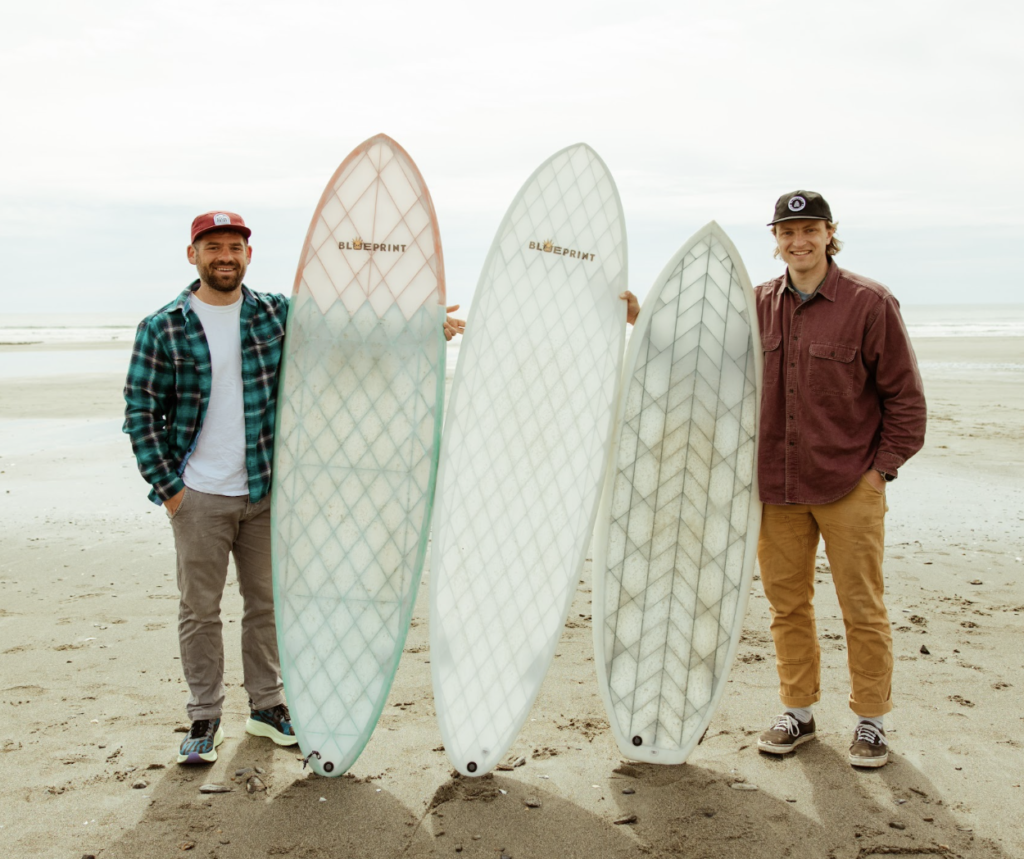
HOW HAS BEING PART OF THE ECOBOARD PROJECT HELPED YOU?
It’s been super cool to see what other like-minded builders are doing. There are so many different approaches and super unique materials, it’s a great place to find inspiration and motivation.
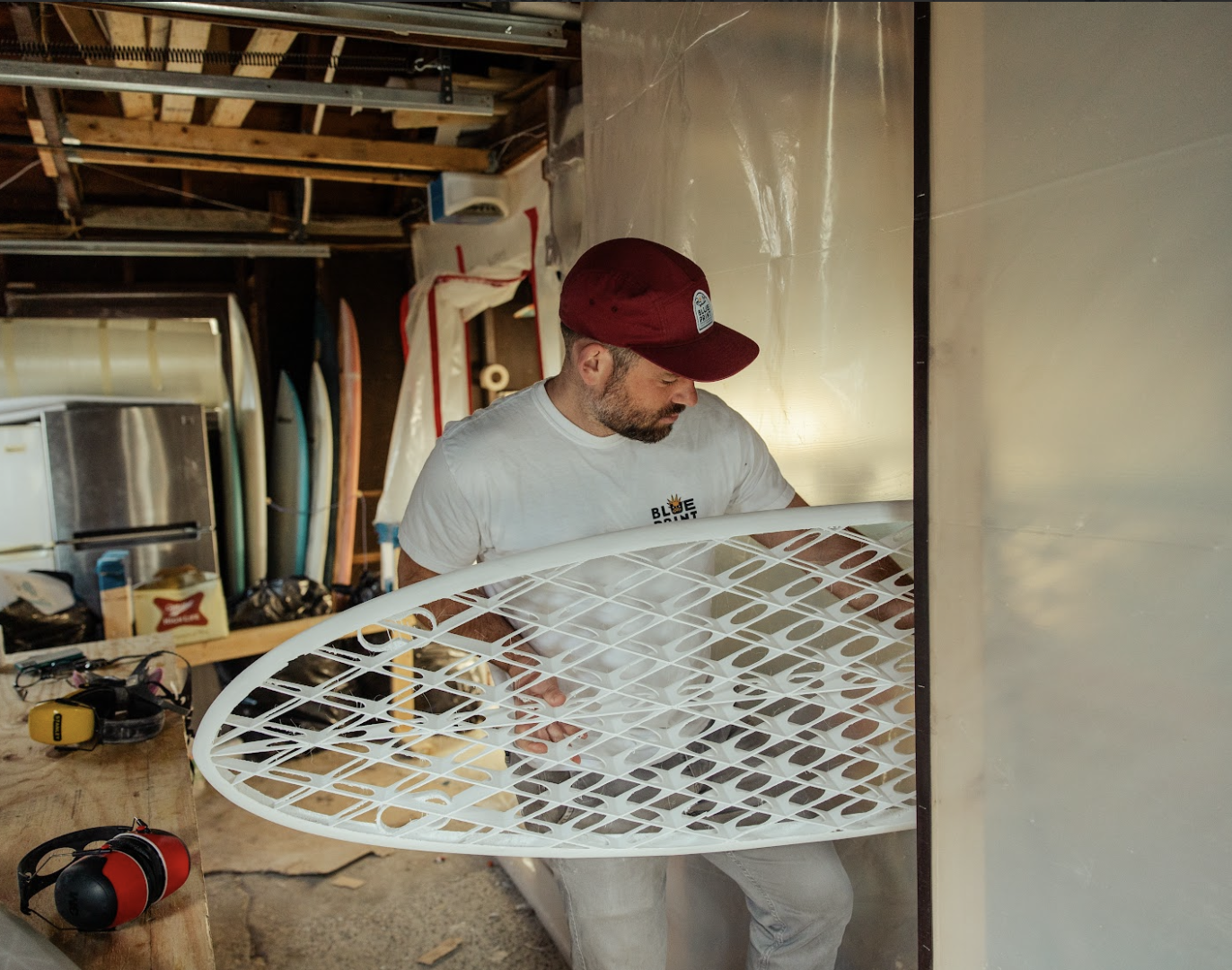
WHAT DO YOU BELIEVE THE YOUR IMPACT IS/BEING PART OF THE ECOBOARD PROJECT DOES?
I hope that we (and the ECOBOARD Project) can prove that there are viable alternatives to EPS and PUl. Many other types of materials and methods make great surfboards, 3D printing being one of them. Ultimately, our main goal is to make great surfboards and show people that not only is it possible, but a future direction of the surf industry.
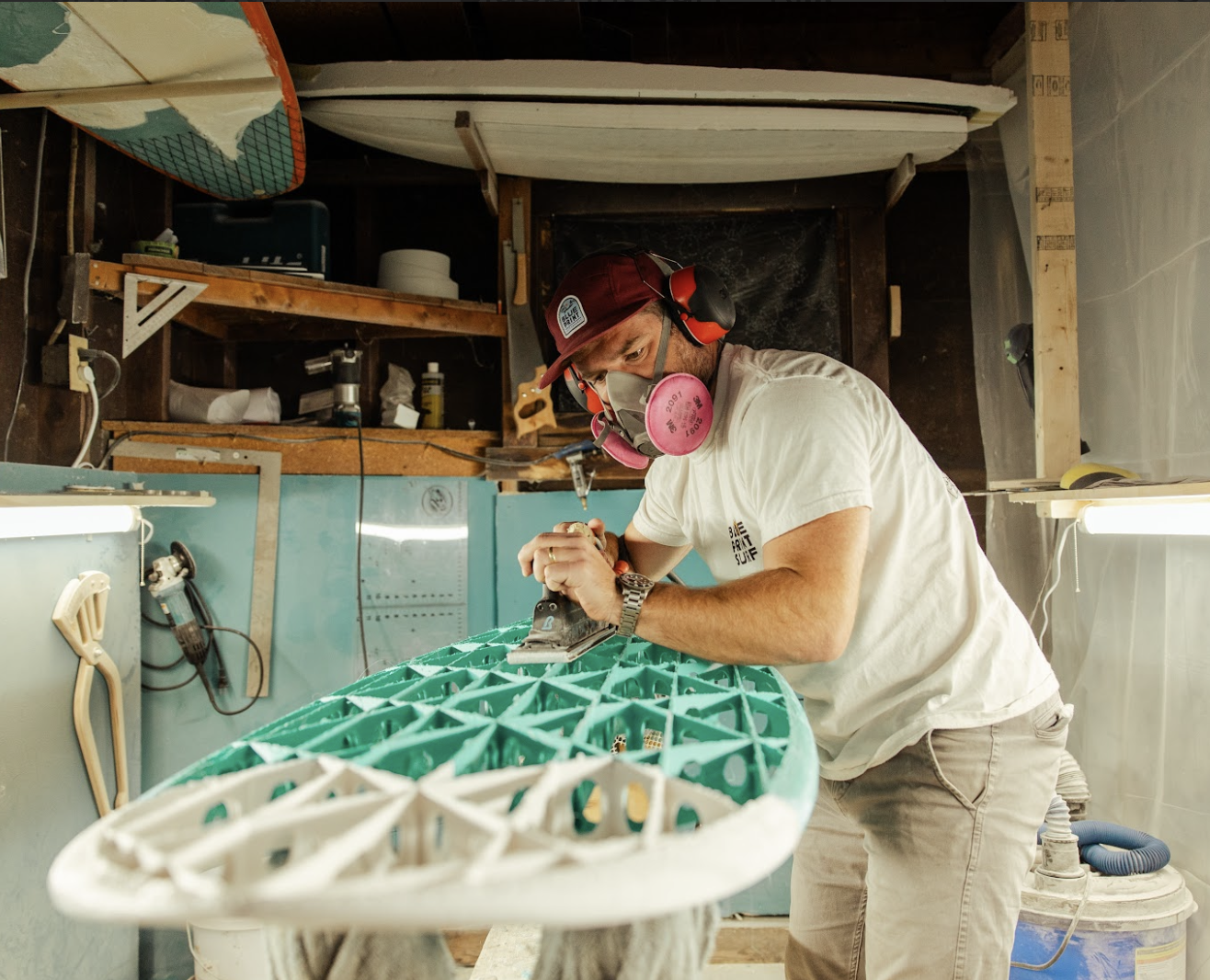
WHAT DO YOU HOPE TO DO IN THE FUTURE WITH THESE BOARDS?
Ultimately we hope our boards remind surfers to think about their environmental impact. We don’t expect them to sacrifice fun or performance, or suddenly go vegan. If in 2050, someone on a beach in Australia says, “Remember when those recycled fishing net boards first came out?” we’ll be very happy.
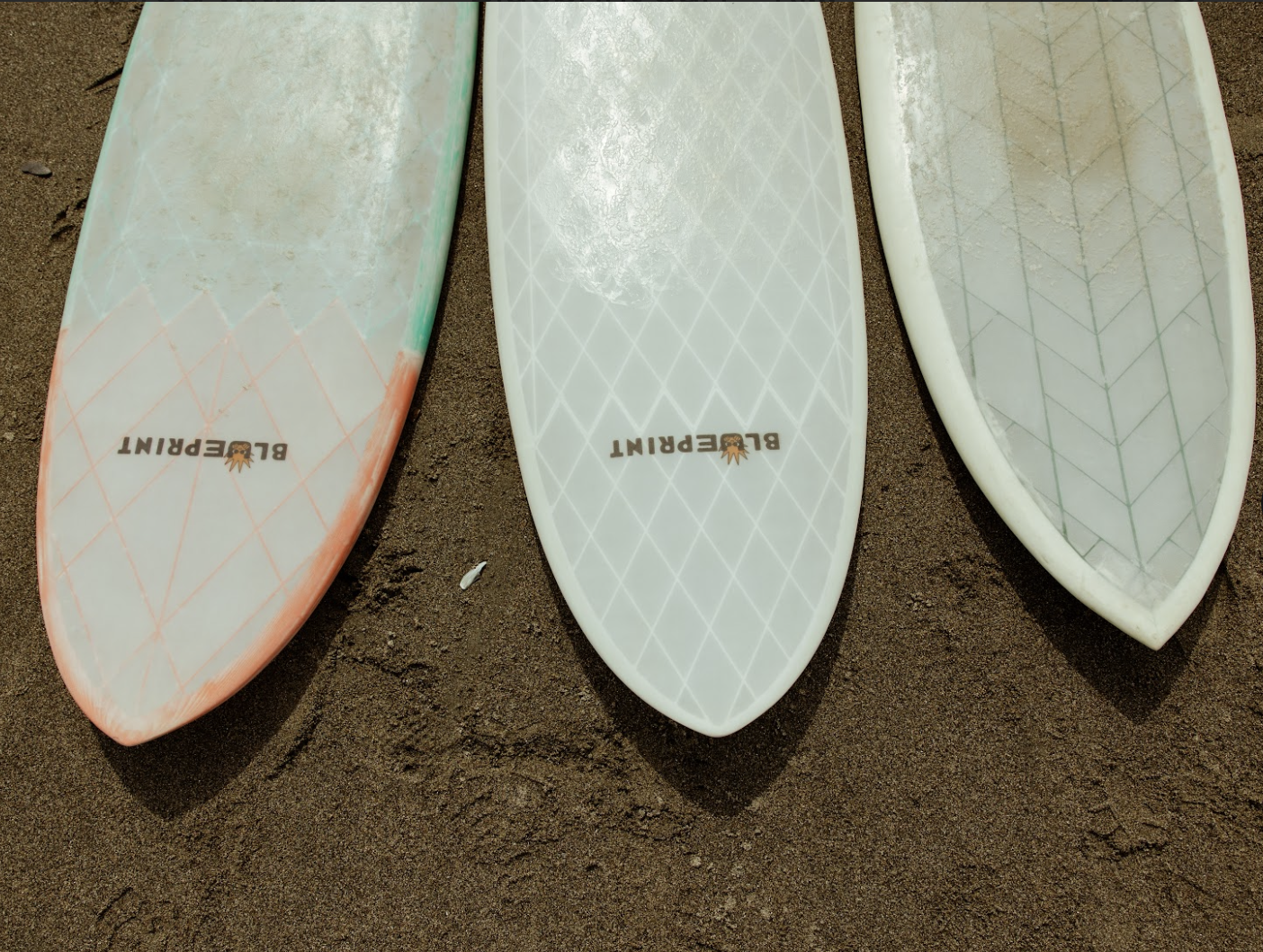
WHO DO YOU HOPE THIS INSPIRES?
We’ve been receiving two or three messages per month from surfers and craftspeople seeking guidance on alternative surfboard construction. It’s been great to share what knowledge we can and witness the creativity of individuals working on their projects in their garages and basements. We run our workshop from a converted 2-car garage, so we understand the value of determination and experimentation in creating something new.
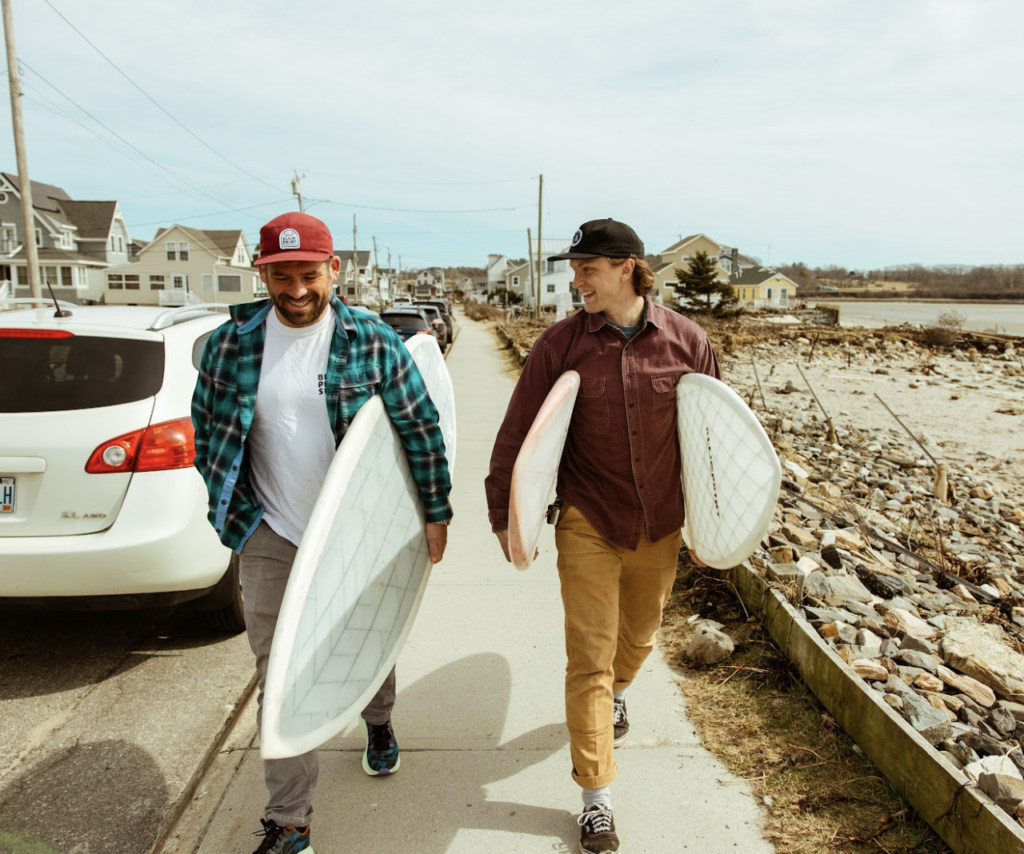
ANY WORDS OF WISDOM/FUNNY MOMENTS/ICONIC/SPECIAL MOMENTS YOU WANT TO SHARE
Definitely! One of my favorites was last September during the Hurricane Lee swell. It was the first time we hired a videographer, and he was making a video about our boards but didn’t have enough surf footage. He showed up with a big lens, but the period was pretty short and the size of the swell had us sitting pretty far offshore, so he lost track of where we were almost immediately. Mike and I were on some of the first boards we made, which were falling apart but still surfed really really well. I got cleaned up by a set and went in to grab some binoculars to help spot Mike, who had already gotten a couple solid rides. I was glued to the binoculars trying to find him, and all of a sudden the videographer taps me on the shoulder and points down the beach. Mike was jogging back to us holding the nose of his board in one hand and the tail in the other. I’m always going to remember that day because we don’t get waves that size very often. It wasn’t a hugely successful day by any means, but we learned a lot about our construction, and what we needed to change, and luckily we did end up with a little bit of footage!
To find out more about how they’re building the blueprint for sustainable surfing, check out their IG @blueprint_surf.
